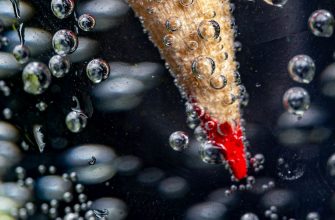Saiga antelope description. Reading an article.
LESSON: Unit 8.3The Natural World. Learning about the environment through learning about the saiga (Content with language).
Lesson 12: Saiga antelope description. Reading an article.
School: NIS Atyrau
Teacher name: Dauletova Ainur Unievna
Learning objectives(s) that this lesson is contributing to:
8.R2 understand specific information and detail in texts on a growing range of familiar general and curricular topics, including some extended texts;
8.R7 recognise typical features at word, sentence and text level in a range of written genres;
8.S2 ask more complex questions to get information about a range of general topics and some curricular topics.
Language objectives:
To practice reading skills.
To provide with subject-specific vocabulary.
Lesson objectives:
All learners will be able to:
Most learners will be able to:
Some learners will be able to:
Answer the questions related to the text correctly.
Plan
Beginning:
Introducing lesson objectives.
Warm-up:
Pre-reading
Ss learn some new words. T hangs the words and their definitions on the wall. And Ss try to find the translation of the words and put them on a whiteboard:
After that they write down those words in their copy-book.
Middle:
While-reading:
Working with the parts of text (G)
Teacher provides learners with feedback on their notes focusing on the main idea of their part of the text.
After reading:
Ss answer the given questions and do the gap-filling task (FAA Reading.)
They draw their hands on a sheet of paper and write there some information about saiga antelope.
Просмотр содержимого документа
«Saiga antelope description. Reading an article. »
Unit 8.3A. The Natural World (Language with Content).
recognize typical features at word, sentence and text level in a range of written genres;
understand specific information and detail in texts on a growing range of familiar general and curricular topics, including some extended texts;
T gives Ss a question worksheet with questions focusing on orthographic and text features in the extract. Ensure that Ss work on this task independently.
T gives Ss a paper-based version of the gap-fill that relates to a specific section of the text. T asks Ss to complete independently and collect for rating.
Learners get “Achieved” if they
present understanding of typical features responding to most of the questions;
explain why when expressing opinion;
present understanding of specific information and detail answering most of the questions ;
Task 1. Answer the questions:
Why is TCM written in capital letters?
How can you explain the meaning of these phrases “endangered area; endangered species; saiga migration”?
Find another way of saying of these words ‘Poaching”, “Global Warming”, “Predator”.
Task 2. In the table below are 10 words from the text. Below the table are definitions of the 10 words. Can you match the words to their definitions?
. – the hard part of a horse’s foot.
……………….. – animals such as cows, sheep, and pigs that are kept on farms.
……………….. – the ability to see.
……………….. is a critically endangered antelope which originally inhabited a vast area of the Eurasian steppe zone from the foothills of the Carpathian Mountains and Caucasus into Dzungaria and Mongolia.
……………….. is an ecotone between the steppe and desert.
……………….. – to keep someone or something safe from harm, injury, damage, or loss.
……………….. – the place in which people live and work, including all the physical conditions that affect them.
……………….. – a situation or an activity that could cause harmor danger.
Area(s) Where Listed As Endangered:
Kazakhstan, Mongolia, Russia, Turkmenistan, Uzbekistan
Saigas are antelopes that were once found from the Western Europe, across the Eurasian continent and into Alaska. It has two sub-species, one is Kazakh sub-species (S. tatarica tatarica) and the other is Mongolian (S. tatarica mongolica). Their numbers were once in the millions only two decades ago. But today only less than 50,000 remain. This creature is very unusual in appearance because of its huge, inflatable, and humped nose which looks very similar to the nose of the tapir. Its very large nose makes the head look unusually large and bulging. Saigas are short with round bodies, thin legs, and a short tail. The average length is about 3.8 to 4.8 feet and the average height is about 2.5 feet. They can weigh up to 112 lbs. They are very good runners and can reach up to 80 miles per hour in a short time. During migration, they can swim across rivers. Their coats are thick with bristly hair to protect them from the cold environment. During the warmer season, their coats get shorter and lighter in color.
Saigas are found in semi-desert steppes and grasslands where they prefer open areas free from dense vegetation. They require plenty of space to escape predators such as wolves and human poachers. They are a migratory species, migrating in the summer and winter and in very large groups. When they are not traveling, they break up into smaller groups to breed or graze on a variety of grasses, herbs, and shrubs. Their large noses help them to filter out airborne dust during the dry summer migrations, and also in the winter to filter out cold air before it reaches their lungs. The eyes are large with a dark brown iris. They are set at the end of bony knobs on either side of its head, giving it a bug-eyed look, and a wide angle to spot potential danger. Their eyesight is keen and they can see long distances. In spring time females give birth to one or two young after a gestation period of 140 days.
Because only the male saigas have horns, they became the main target in slaughters. The proportion of adult males in its population has been steadily declining from 1997.
2) Heavy aridity. Because of Global Warming, the climate of arid steppe of the central Asia became worse and worse. The vegetation is degrading and biomass in the winter decreases gradually.
3) Increasing Human activities. In saiga distribution area, irrigated farming, man-made canal, large cistern and high-way are increasing. The construction has become barrier against saiga migration. A great number of young saigas died when they tried to pass those barriers.
4) Disease. The livestock in the saiga distribution area is also increasing and may infect the sensitive saigas with severe diseases. Some reports showed that people once found more than 50,000 saigas had been dead because of the mouth and hoof disease.









